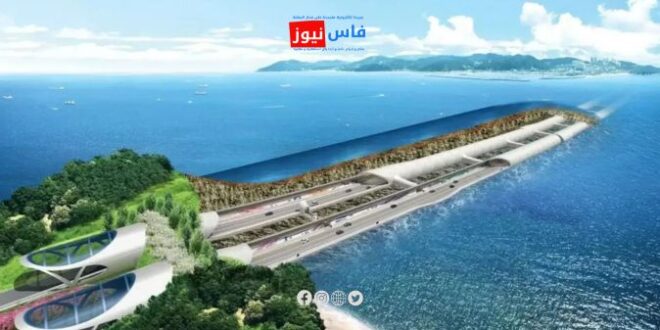New estimates suggest that the underwater tunnel project linking Spain and Morocco via the Strait of Gibraltar will require a colossal investment that could exceed 15 billion euros.
This long-standing project to connect Europe and Africa across the Strait of Gibraltar is experiencing a revival. Spain and Morocco are actively supporting the construction of a railway tunnel, which could become the world’s longest underwater tunnel.
According to the Spanish newspaper “La Razón,” the project involves building a 60-kilometer railway tunnel, with 28 kilometers entirely underwater, nearly 10 kilometers longer than the iconic Channel Tunnel (50.5 kilometers) and the Japanese Seikan Tunnel (53.8 kilometers).
Investments Already Underway
After decades of studies, political obstacles, and technical challenges, the project has received a new impetus, as reported by the Madrid-based newspaper. Although the final cost has not yet been officially disclosed, sources close to the project estimate that it could exceed 15 billion euros.
This amount will be jointly funded by the two kingdoms and the European Union. Significant funds have already been mobilized: 100,000 euros in 2022, 750,000 euros in 2023, and 2.7 million euros (over 2 million euros of which are from European funds) in 2024.
Utopia Becoming Reality
With recent feasibility studies, European investments, and renewed geostrategic interest in bringing Europe and Africa closer, what seemed like a distant dream is gradually becoming a reality. In practical terms, the Spanish government, through the public company Secegsa, has commissioned two key studies to advance the project’s technical feasibility.
The first study focuses on the geotechnical analysis of the Camarinal Sill. Conducted by Herrenknecht Ibérica, a subsidiary of the German group Herrenknecht, a global leader in tunnel boring machines, it examines how to drill the seabed to build the tunnel.
The second study involves seismic monitoring of the area, using seismometers provided by Tekpam Engineering, under the supervision of the Navy. These studies are expected to be completed by September 2025.
Major Geopolitical and Economic Implications
The tunnel, linking Tangier (Morocco) to Algeciras (Spain), will include three tunnels: one for rail, one for passengers, and one for goods. In the first phase, a single tunnel will be shared for both directions, before being duplicated to separate directions in a second phase. A vehicle tunnel is currently excluded.
In addition to the engineering feat, this project is considered “a key issue on the global geostrategic chessboard,” according to the same source. “It will strengthen the connection between Europe and Africa, facilitating trade, freight transport, and tourism,” and “will also accelerate rail integration across continents, even if the Moroccan network is not yet fully electrified.”
New Horizons
The project is also expected to promote economic development in the Strait of Gibraltar regions, both in southern Spain and northern Morocco. However, according to official timelines, this infrastructure will not be ready before 2040, at the earliest.
The reactivation of the underwater tunnel project between Spain and Morocco comes at a time when technology has reached sufficient maturity to overcome challenges such as deep drilling or seismic isolation in unstable areas. Furthermore, the political context has improved, with enhanced cooperation between the two governments.
A Realistic Combination
In April 2023, the transport ministers of both countries officially relaunched the project after 14 years of stagnation. The project has been included in the strategic plans of the European Union’s Recovery and Resilience Facility, ensuring European financial support.
Meanwhile, Morocco continues to expand its railway network and aims to make Tangier a logistics hub connecting Europe to North Africa.
The increasing migration pressure and trade flows between the two continents reinforce the strategic interest in stable, secure, and permanent infrastructure.
This new scenario offers, for the first time, a realistic combination of political will, funding, and technical feasibility, bringing the project closer to a stage never reached in nearly three decades of planning.
 فاس نيوز ميديا جريدة الكترونية جهوية تعنى بشؤون و أخبار جهة فاس مكناس – متجددة على مدار الساعة
فاس نيوز ميديا جريدة الكترونية جهوية تعنى بشؤون و أخبار جهة فاس مكناس – متجددة على مدار الساعة













